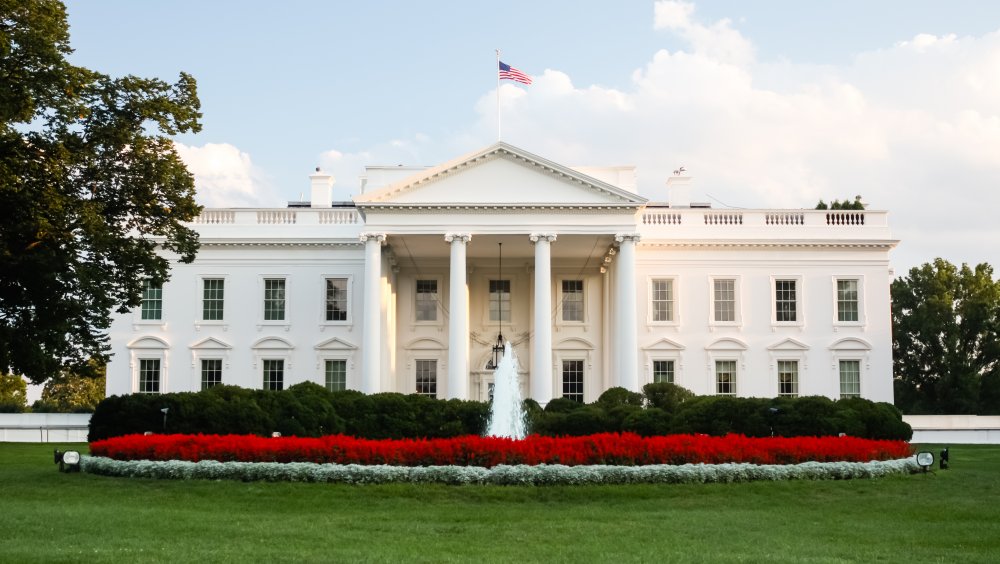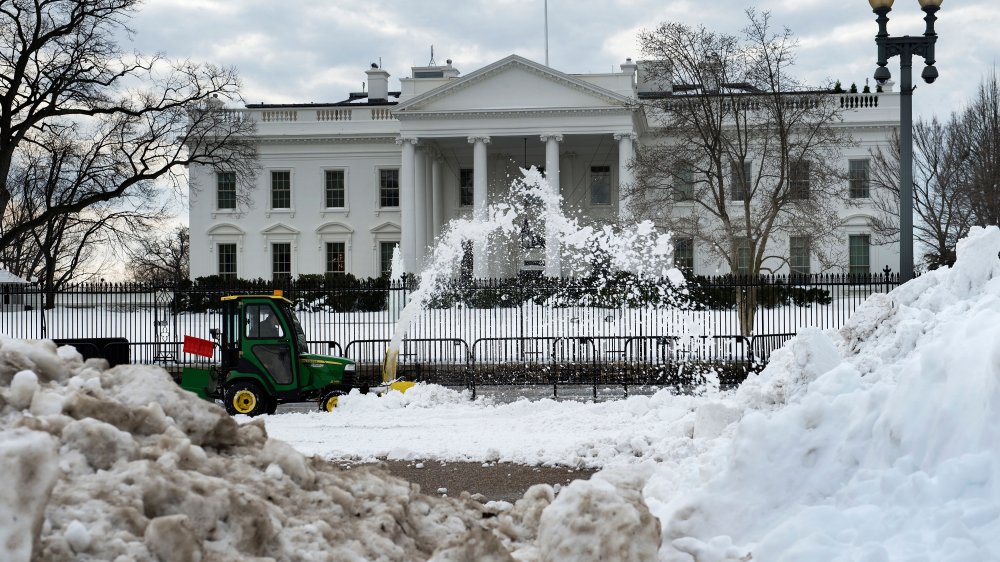The Real Reason The White House Is White
On 1600 Pennsylvania Avenue sits a mansion unfit for a king, and that's a good thing. America already had a King George, and he taxed colonists' nerves so much that they told him to shove his tea right up his rear harbor during the Revolutionary War. So, it must have felt hella uncomfortable for some Americans that the country's first president was also named George, and, according to the Encyclopedia Britannica, the famed white estate commissioned under his administration was first referred to as the "President's Palace" on maps. That awkward moniker felt too monarchical, and got the boot. In 1810, the president's residence was officially named the Executive Mansion, which somehow sounds more colorless than "White House."
History writes that "White House" didn't become the official name until President Teddy Roosevelt adopted it in the 1900s. Depending on how you see it, it's either a flavorless architectural rice cake on the D.C. cityscape, or it's the White Album of buildings. But why not another color? Would red remind Americans too much of the British redcoats they fought? Would "Brown House" sound too much like an outhouse? The answer lies in how the place was constructed.
The whitewashed house
The design of the White House was decided by a competition, per the Encyclopedia Britannica. The winner was architect James Hoban, who immigrated from Ireland after the American Revolution. Hoban's design netted a $500 prize plus commission. As History details, a crew consisting of slaves, freed African Americans, and immigrants from Europe toiled away for eight years. Constructed from Aquia Creek sandstone, it received a coat of limestone whitewash in 1798. This gave the building its famously snowy hue.
The White House Historical Association adds that the whitewash wasn't meant to be permanent. Its purpose was to fill in cracks and crevices but otherwise wear away. However, the house received new coats periodically before being covered with white lead paint in 1818. Nearly every U.S. president has lived there. The one exception is George Washington, whose second term terminated before the building was livable. Even when the second president, John Adams, and his First Lady, Abigail, moved there in 1800, the building was still a work in progress. In the ensuing two centuries, presidents would add their own personal touches, turning the now 142-room house into a temporary home.

